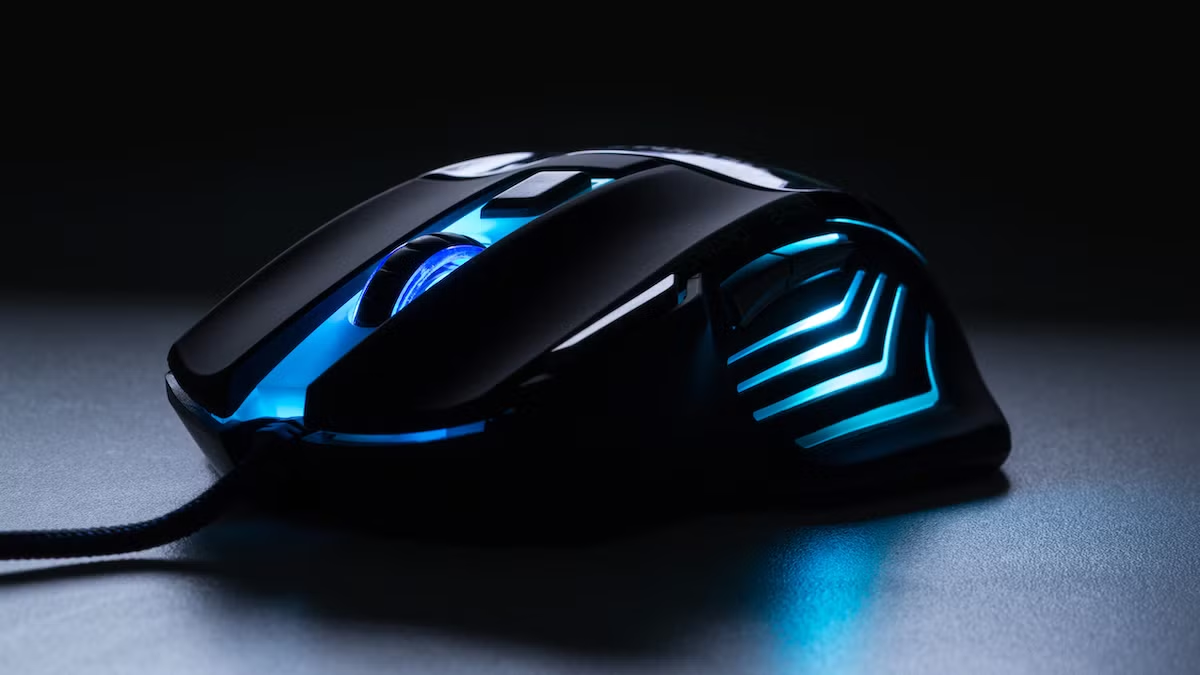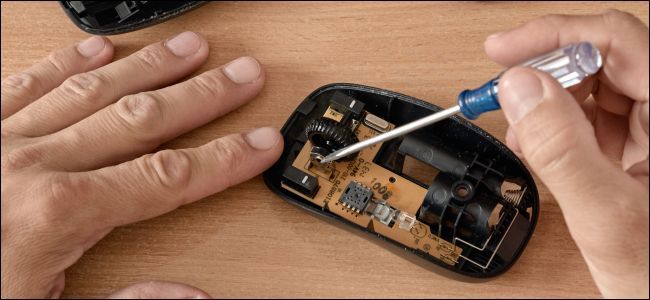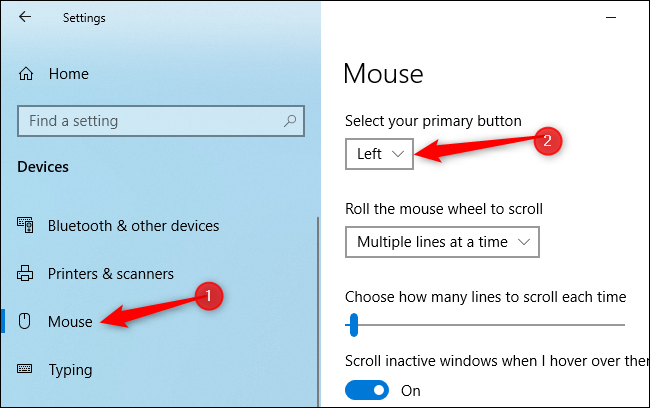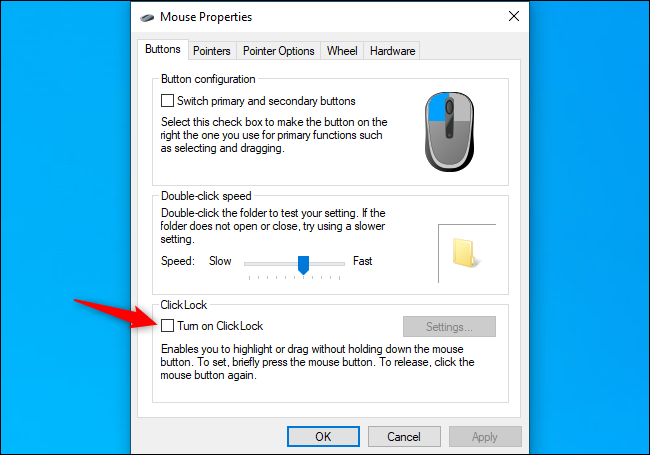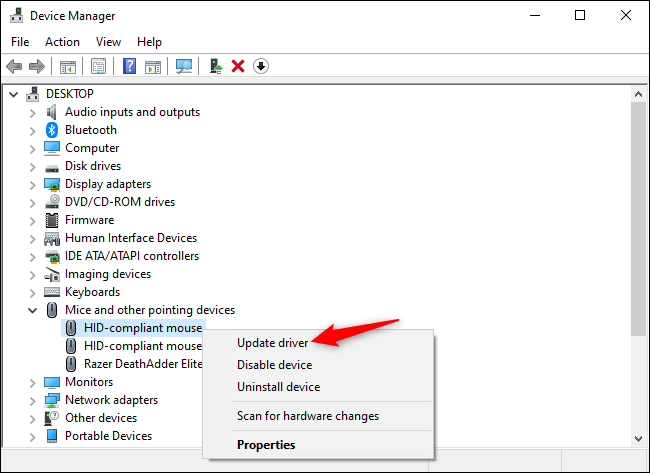Quick Links
Even something as simple as a mouse button can fail. If your mouse's left-click button is sticking, isn't consistently responding, or is accidentally double-clicking, this often indicates a hardware problem with the mouse. It could be a software issue, however.
It's Probably a Hardware Problem; Here's How to Check
In our experience, most mouse left-click (or right-click) issues point to hardware failure. If the mouse's left-click button doesn't work, only sometimes responds, accidentally "unclicks" as you drag, misclicks, or double-clicks when you click once, that's a pretty good sign there's something wrong with the hardware in the left-click button itself.
There's an extremely easy way to check whether you have a hardware issue or a software issue: Unplug your mouse from your current computer, plug it into another computer, and test the left-click button. If you have a wireless mouse, either plug its RF dongle into another computer or pair it via Bluetooth with another computer.
If the problem is the same when the mouse is plugged into another computer, you know you have a hardware problem. If the mouse works perfectly on another computer, there's a software configuration issue with your current computer.
You can also try connecting another mouse to your current PC. Does it have the same problem? If not, there's likely a hardware issue. If both mice have the same strange left-click issues, there's definitely a software issue with your PC.
There could also be a problem with a USB port on your system---if it's a wired mouse, try plugging your mouse into another USB port. If you have a wireless mouse with a USB dongle, move the dongle to another USB port.
Keep in mind that some problems can be spotty or intermittent, especially if the hardware is just starting to fail. The mouse button may work great much of the time and only fail sometimes. Use the mouse with another PC for long enough to confirm that it's working correctly.
How to Fix a Broken Mouse Button
All mouse buttons will eventually fail if you use them enough. Mouse buttons are rated for a certain number of clicks. For example, the latest version of Razer's popular DeathAdder Elite gaming mouse is rated for "up to 50 million clicks." A cheaper mouse may be rated for many fewer clicks. After that, the physical mechanism in the mouse button wears down, and it stops working correctly.
If your mouse is still in warranty, we recommend you contact the manufacturer and take advantage of it. The company should repair the mouse for you---or, more likely, send you a new one.
If your mouse is out of warranty, well, it may be time to buy a new mouse. Or, if you're willing to get your hands dirty, you can try repairing it yourself. The exact process will vary depending on your model of mouse and precisely what's broken. For example, iFixit has a general guide to repairing mouse buttons. YouTube is full of advice for individual mouse models, such as this guide to re-tensioning a spring in a Logitech Performance MX mouse. The problem may be simpler than it seems---you may just need to open the mouse and clean out some dust getting in the way. We recommend searching for your mouse's model name and "fix left click," "fix mouse button," or a similar search for some customized information.
How to Troubleshoot Left-Click Software Issues
If your mouse works perfectly fine on another PC but doesn't work correctly on yours, then congratulations! You can fix the glitch. You just need to find out what software issue you have.
Before we start, if you're having trouble following these tips due to mouse clicking problems, you can enable Mouse Keys by pressing Left Alt+Left Shift+Num Lock. You can then control your mouse cursor from your keyboard.
On Windows, it's possible to swap your left and right mouse buttons. If you've done this, your left mouse button may not appear to function normally---it's functioning as the right one, while the right one is functioning as the left one. This is intended for left-handed people using a right-handed mouse.
On Windows 10, head to Settings > Devices > Mouse. Under "Select your primary button," ensure the option is set to "Left." On Windows 7, head to Control Panel > Hardware and Sound > Mouse and ensure "Switch primary and secondary buttons" isn't checked.
The ClickLock feature can also cause strange issues. With this enabled, you can briefly press the mouse button and release it. Windows will treat the mouse button as held down until you click again. This can help you highlight and drag if you have difficulty holding the mouse button down, but it's strange and confusing behavior if this setting somehow accidentally got turned on and you aren't aware of it.
On both Windows 10 and 7, head to Control Panel > Hardware and Sound > Mouse. Ensure the "Turn on ClickLock" option is unchecked here.
It's possible that a hardware driver issue could be causing issues with recognizing your mouse button's clicks, too. We've never seen this problem in the wild, but it's worth checking. To test this, open the Device Manager. You can do so by right-clicking the Start button on Windows 10 and selecting "Device Manager."
Expand the "Mice and other pointing devices" section, locate your mouse, right-click it, and select "Update Driver." Click "Search automatically for updated driver software," and Windows will attempt to find new drivers that match the mouse.
If you see multiple mouse devices here, repeat the process for each.
Many other websites offer a wide variety of troubleshooting tips that we doubt are helpful. As always it's a good idea to reboot your PC and see if that fixes the problem. And, sure, you could try booting into Safe Mode to see if there's a strange hardware issue. But scanning your system files for corruption probably isn't going to help.
Let's face it: Most left-click problems with mice are due to hardware failure. Unless you've accidentally enabled a particular setting in Windows, the real solution to a left-click problem is generally replacing (or repairing) the mouse itself.

